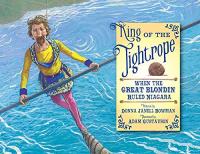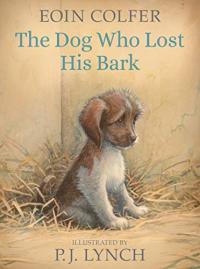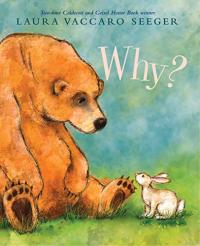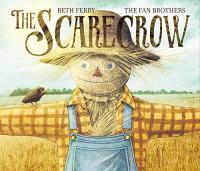
For his 8th birthday, young Mario Molina got a microscope, which launched a career in science. His interest in chemistry led to a doctorate and work on the atmosphere. In an epilogue by Mario, the Mexican-born chemist declares he has now taken on global warming. Additional back matter adds even greater interest in this accessible and appealing biography. The book is also available in Spanish: Mario y el agujero en el cielo: Cómo un químico salvó nuestro planeta (opens in a new window).
Mario and the Hole in the Sky: How a Chemist Saved our Planet

From rocks to coral reefs, animals and insects can be difficult to see. Why? Because camouflage provides protection. Camouflaged animals are described in specific environments; turn the page and the same animal is shown without camouflage with recognizable size comparisons. Additional information concludes the handsomely illustrated and informative volume.
Look Again: Secrets of Animal Camouflage

Jean-Francois Gravele first performed as a child. Walking on ropes required skill, confidence, and daring, which Jean-Francois had in abundance. As an adult, he traveled from France to America and decided he would walk across Niagara Falls — on a rope! This fascinating character comes to life in lively language and dramatic illustrations. Additional information about The Great Blondin (as Jean-Francois became known) and photographs are included.
King of the Tightrope: When the Great Blondin Ruled Niagra

Dinosaurs lived during three eras: Triassic, Jurassic, and Cretaceous. Find out what’s in a paleontologist’s toolkit then join a dig site for each period. Double-page gatefolds open to reveal which dinosaurs once lived at the dig site. Additional information and a quiz complete this realistically illustrated introduction for budding scientists.
In Search of Dinosaurs: Find the Fossils: Identify the Dinosaurs

Like the life of Margaret Wise Brown, this is not a typical biography of an author. “Margaret Wise Brown lived for 42 years. This book is 42 pages long.” And while nobody’s entire life can fit in 42 pages, the important things can. In a conversational narration, key elements of Brown’s life and contributions are highlighted, illustrated in gently line and soft colors. Altogether, this is a fitting tribute to a singular author.
The Important Thing About Margaret Wise Brown

Three high-energy children and their dog begin a hike in the woods by running. They stop along the way to enjoy thimbleberries, observe a deer, and more. One of the girls keeps a journal of things she’s observed. Wren’s journal is shown after the three children return home as the sun sets. Simple illustrations convey they joy of an outdoor hike and what the kids have seen along the way.
The Hike

In spite of his canine mother’s assurances, a puppy is mistreated by people and winds up at a shelter. A boy named Patrick and his mother spend the summer — and beyond — at his grandfather’s home. How the dog who lost his bark and a boy with no friends and parents who are separating help each other heal is tenderly told and gently illustrated in this short, moving novel.
The Dog Who Lost His Bark

Aaron Lansky always remembered his grandmother’s immigration story when she was forced to give up her candlesticks and her Yiddish book. Aaron also loved books. An informal narration and darkly hued illustrations (which the illustrator notes pay homage to Marc Chagall) introduce a fascinating man whose work continues in the Yiddish Book Center. Additional information concludes this attractive and informative biography.
The Book Rescuer

When you can’t stop moving, we say you have “ants in your pants.” That’s because ants always are moving! Fascinating facts are presented in a generously illustrated, humorous but factual format — including what ants eat and what eats ants. This is a worthy addition to the author’s fascinating and accessible series.
Ants Don’t Wear Pants

Anna Mertz helps an orphaned black rhinoceros named Samia prepare for life in a sanctuary. How Anna and Samia became best friends forever is told with verve and humor, complemented by engaging, stylized illustrations. An afterword with information about Anna, Samia, and rhinos as well as additional resources is included.
Anna and Samia: The True Story of Saving a Black Rhino

Why is the question a small rabbit asks a gentle but imposing bear. Why can’t the bear go into rabbit’s hole? Why did rabbit fall from the tree? Bear patiently answers most of the questions, but for some there are no answers. Expressive art and child-friendly text fuse seamlessly in this moving and evocative book.
Why?

A sterling storyteller and wonderful writer with a word-spinning pen turn Captain Rottingbones and his word-pilfering pirates into fantabulous farmers. Lush language and humorous illustrations capture the zany story which demands to be shared aloud. This is a fitting homage to this creative team’s friend (author and storyteller Margaret Mahy) and may lead readers to find additional tales.
The Word Pirates

Explore nature from tiny seeds to ocean life, from worlds hidden underground to a frosted earth. Brief, lyrical text is illustrated on the opposite side of the open book which then folds out to provide additional illustrations and information about the scene. Colorful, stylized illustrations and die cuts add interest to each informative double-page spread.
A Walk Through Nature

Many years ago, Eleanor Foraker, better known as Ellie, “helped change the world with a needle and thread.” She and her team worked for a company that made clothing for women and babies. They entered a spacesuit design competition and won. Ellie and team’s A7L spacesuit was worn by Neil Armstrong and Buzz Aldrin to walk on the moon. Actual events inspired this unique look at space exploration.
The Spacesuit: How a Seamstress Helped Put a Man on the Moon

A scarecrow guards his fields throughout the seasons; no animal or bird comes. But then something small drops down to forever change the lonely figure in the field. It is a baby crow who stays with the scarecrow, leaves, and then returns with its family. Glowing illustrations change with each season to enhance the touching, rhyming tale.
The Scarecrow

Though they’re quite different, calm and patient Fox remains friends with Chick. Unlike Fox, Chick tends to worry and fret in each of three short tales told through illustration and conversation bubbles. Newly independent readers will appreciate the accessible comic book format and relatable emotions expressed in text and image.
The Quiet Boat Ride and Other Stories

One “famished fox “with 2 “sly eyes” and 10 “sharp teeth” gradually creeps up to an unsuspecting hen house. Suddenly, with feathers flying, “100 angry hems” scare off one “frightened fox.” Brief text and dramatic illustrations combine to present a tense, humorous, and very satisfying story combined with counting from 1 to 10.
One Fox: A Counting Book Thriller

Poodle Polly belongs to Molly. Eric, a dachshund, belongs to Derek. But for the poor, large, older mutt named Mr. Scruff, there’s no one. That is until small Jim meets him — and even though their names don’t rhyme, they become fast friends. Whimsical illustrations add charm to this affable, rhyming story.
Mr. Scruff

When the younger brother describes his sister, she’s pictured as a rhinoceros, a boring, bossy bully. Flip the book over, and it’s the sister who sees her brother as a noisy, annoying monkey. They come together to realize that maybe two kids in “the family isn’t so bad.” But then with a “Waaaa,” a third sibling arrives! This humorous look at sibling dynamics is sure to resonate.
Little Bro, Big Sis

A child looks out from an apartment window assured that the wind and sky will be there if she wants to fly. The lyrical reassurances continue as children continue on different adventures, imaginatively portrayed in the artist’s signature bold, childlike style. Altogether, this is a comforting, cozy book to share again and again.
Just in Case You Want to Fly

A father warmly and creatively answers his child’s endless questions: “Why is the ocean blue?” (“Because every night fish play sad songs and cry blue tears.”) The final question, “Why do we have to sleep?” is answered, “Because there are some things we can only see with our eyes closed.” Stylized illustrations suggest a timeless quality to a child’s curiosity and a parent’s patience.
Just Because

Join the narrator’s rhyming examination of his house, including things one doesn’t always see. For instance, in the room where the family bakes, “we sing into spoons and get covered in cake!” Each room holds special pleasure. A double gatefold opens up an entire block of houses, concluding “… our house is something like yours!”
In Every House on Every Street

Poor porcupine! No one will give the prickly (but needy) critter a hug. Not Lou the rabbit, not Ken the deer, not even big bear, Joe. They are all afraid of the green kiss-seeking snake. But porcupine isn’t! Animated, comical illustrations combine with conversation bubbles to tell a very funny, understated, and satisfying story.
I Need a Hug

Ben got the best birthday present of all when he walked into his classroom that day. Until then, after being teased at school, Ben hid his love for colorful fingernails, only painting them on weekends. His friend Margarita and Ben’s parents had always been supportive, but now everyone would share Ben’s joy. Line and wash illustrations complement this unique way of accepting differences.
